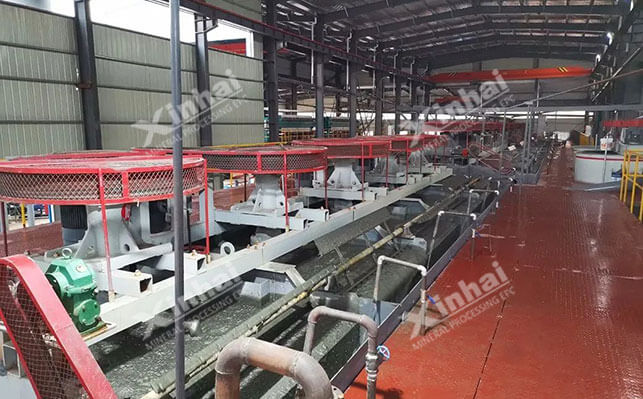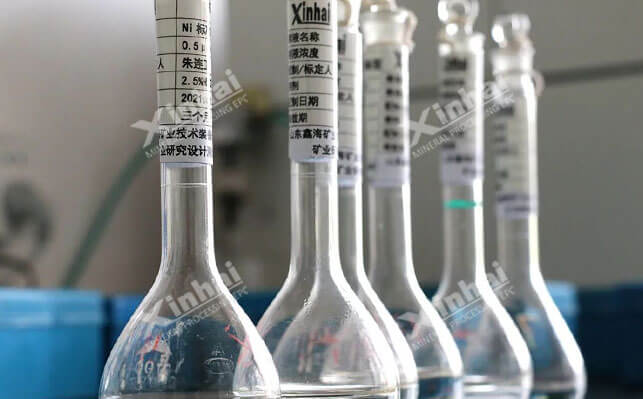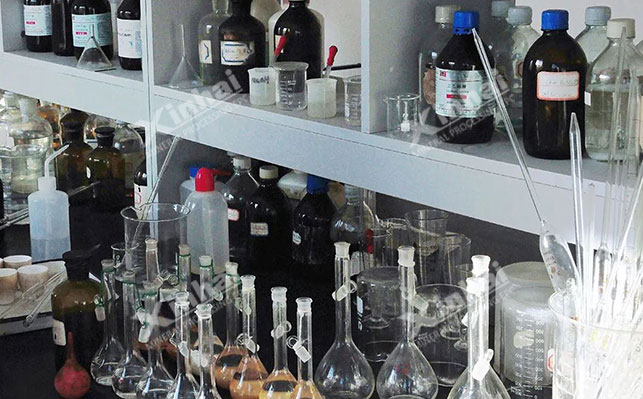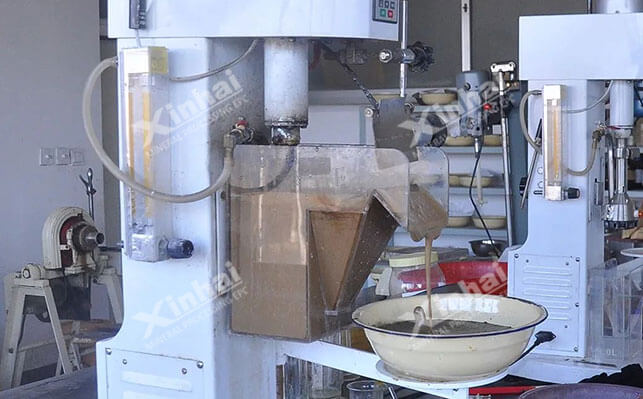Flotation is a commonly used method for lithium ore processing. Whether the flotation effect of lithium ore is good or not, the correct selection of collectors is very important. At present, the common collectors include anionic collectors, cationic collectors, combined collectors and new collectors. Which collector is better for lithium ore flotation?

The collection mechanism of anionic collector and lithium ore mainly depends on the combination of particle on the surface of lithium ore particles and anionic collector. Under the suitable pH of single mineral flotation, the anionic collector and spodumene surface have good selectivity through electrostatic force and chemical reaction.
Common anionic collectors include sodium oleate, oxidized paraffin soap, naphthenic acid soap, sodium dodecyl sulfate, hydroxamic acid, etc. These anionic collectors act on the surface of lithium particles through different active groups. The single anionic collector has good selectivity, but its collecting ability is weak. It can be used with high-valent metal ion activator under strong alkaline conditions, and the selectivity of activation can be adjusted by adjusting high-valent metal cations. In addition, the amount of fatty acid collectors such as oleic acid and oxidized paraffin soap used in the flotation of lithium ore is large, and it is not easy to dissolve and disperse in the slurry. Therefore, the slurry environment needs to be adjusted to alkaline, and the temperature is also required.

Lithium cationic collectors include dodecylamine, tetradecylamine, hexadecylamine and their isomers, mixed amine and cocoamine, etc., which act on the surface of lithium particles by electrostatic force or van der Waals force with amine groups, and need high valence metal cations and regulators to control the selectivity of particle activation. In the flotation of pure lithium minerals, the flotation capacity is good in a wide range of pH, and the lithium recovery rate is high, but the selectivity for different minerals is poor.

The combination of different collectors can often play a greater role, resulting in co-adsorption, lengthening of drain end, promoting adsorption and other phenomena. Some can improve flotation efficiency, some can improve concentrate grade, and some can reduce reagent consumption or improve flotation environment. Lithium combined collectors mainly include anion and cation combined collectors, anionic combined collectors, anionic non-ionic combined collectors, etc.
Anion and cation combined collector: The anion and cation combined collector has strong synergistic effect and surface activity in lithium ore flotation, and has good collection and selectivity. This type of combined collector is commonly used as a combination of cationic collector with - NH2 structure and anionic collector with - COOH structure.

Anionic combined collector: In lithium ore flotation, anionic combined collector can improve the flotation environment, strengthen the reagent performance by using anionic active groups with different structures, lower the cost and improve the concentrate index.
Anionic and non-ionic combined collectors: In the flotation of silicate-like lithium minerals, anionic and non-ionic combined collectors can play a good role. The molecular weight of non-ionic collectors is large. When combined with anionic collectors, they can be used as a synergist to promote the dissolution and dispersion of anionic collectors in flotation solution, reduce the critical micelle concentration of collectors, and improve flotation performance.
New collectors used for lithium ore flotation mainly include amphoteric collectors and chelating collectors. The amphoteric collector contains both anionic and cationic functional groups, and the structure of this heterotropic active group strengthens the performance of the collector.
The mechanism of the chelating collector for spodumene flotation is that the collector forms a ligand in the solution and has a strong bond with the metal cations Al3+, Si4+, Ca2+on the lithium surface to form a stable chelate, which mainly interacts with the mineral surface through surface chemical reaction and chemical adsorption, and has a strong collection and selection ability.
The above four kinds of collectors are commonly used in lithium ore flotation. Specifically, which collector has better flotation effect should be selected according to the results of beneficiation test, so as to select flotation agents suitable for the nature of lithium ore, so as to obtain better flotation effect and economic benefits.